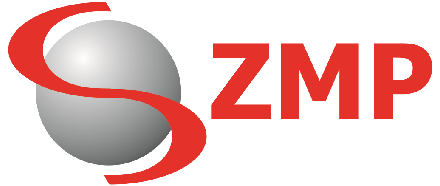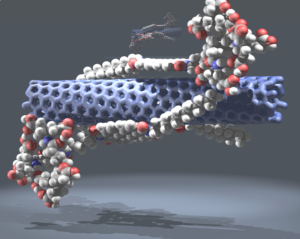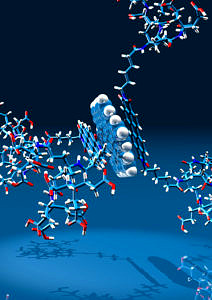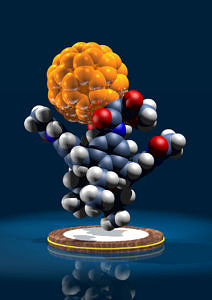Functional Carbon Allotropes
| Deutsch |
Functional Carbon Allotropes
Among the development of novel, high performance materials within the “Center of Advanced Materials and Processes” the low dimensional synthetic carbon allotropes carbon nanotubes (CNTs) and graphene are ascribed a key role. In virtue of their extraordinary electronic as well as mechanical properties both, allotropes are promising candidates for future high tech applications. Owing to their polydisperse nature, processability is strongly limited in both aqueous as well as organic solutions due to intrinsic insolubility in the absence of chemical surface modification. The group “Functional Carbon Allotropes” led by Prof. Dr. Andreas Hirsch and Dr. Frank Hauke are addressing fundamental chemical modifications of both carbon allotropes utilizing both supramolecular (non covalent) as well as direct (covalent) derivatization of the respective carbon framework. Besides the scientific investigation of reactivity patterns the modulation of material- and surface properties are in the center of attention. The implementation of functional anchor units is considered as corner stone for grafting molecular building blocks (fullerenes, porphyrines, dendrimers, calixarenes) in order to combine their properties with those of carbon nanotubes and graphene.
Graphene – a single sheet of the graphitic hexagonal carbon network – can be obtained through exfoliation from the ubiquitarily available graphite starting material after proper activation. During the exfoliation process graphene flakes with variable numbers of layers are formed additionally to the desired single layer sheets. This polydispersity poses a challenge for microscopic and spectroscopic characterization of such systems. Regarding carbon nanotubes the above mentioned polydispersity surpasses the aspect of molecular size, as the material is composed from CNTs with different lengths, diameters and chiralities (twist angles of graphene sheets during imaginary rollup to form the tube). Especially the last property fundamentally influences the CNTs’ intrinsic electronic properties in a way that either metallic or semiconducting systems are obtained. Consequently, another key aspect of the “Functional Carbon Allotropes” group alongside the chemical modification is the separation of the raw mixtures in order to acquire uniform material properties.
The third core theme is the in-depth characterization of functional carbon allotropes which only is possible through joint utilization of numerous complementary spectroscopic and microscopic techniques.
The activities of the research team “Functional Carbon Allotropes” are topically rooted to a series of DFG-projects, a combined BMBF-project “Skalagraph”, the “Advanced Investigator Grant” – GRAPHENOCHEM – of the ERC, to the SFB 583 “Redoxaktive Metallkomplexe: Reaktivitätssteuerung durch Molekulare Architekturen” as well as to the Cluster of Excellence “Engineering of Advanced Materials”.



